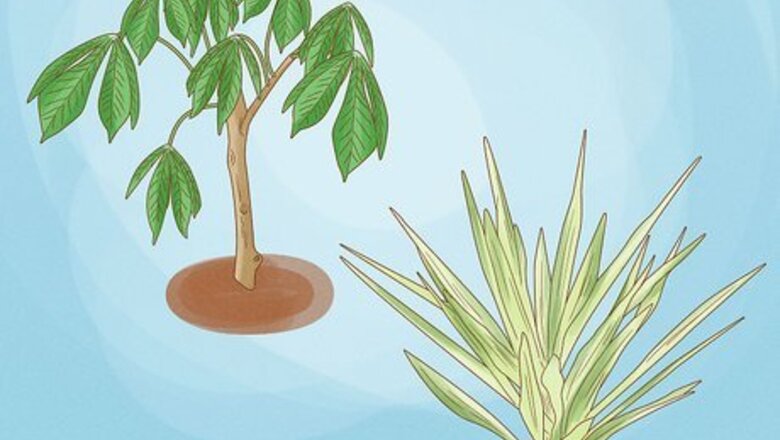
views
- Cassava is a plant known for its root vegetable. It’s often referred to as “yuca” (spelled with one “c”) and sometimes ground to make tapioca flour.
- Yucca (spelled with two c’s) is a shrub known for its narrow, pointy leaves. It doesn’t produce a root vegetable and is totally unrelated to cassava/yuca.
- Cassava is a valuable crop since it grows easily and its roots are high in carbohydrates. Many cultures have foods and dishes containing cassava.
- Today, yucca plants are mainly used for decoration and landscaping, though some ancient peoples used it to make shampoo and other products.
Cassava vs. Yucca

Cassava and yucca are totally different plants. Cassava is a plant known for its edible root vegetable, which is sometimes ground up to produce tapioca flour. Cassava is also called “yuca” (spelled with one “c”) in some cultures, which explains why it’s often confused with “yucca” (spelled with two c’s). Yucca, however, is a shrub known for its narrow, pointy leaves. It doesn’t produce a root vegetable and is totally unrelated to cassava/yuca. The mixup between cassava and yucca originated with European colonialists who confused the two plants for each other. Cassava roots are consumed in many cultures around the world. They’re grown and harvested throughout Latin America, as well as parts of Asia and Africa. Yucca plants are often used for decoration or grown in gardens. Some indigenous peoples of the Americas also used yucca leaves to make belts, ropes, baskets, and clothing, while the roots were used to make shampoo.
Cassava
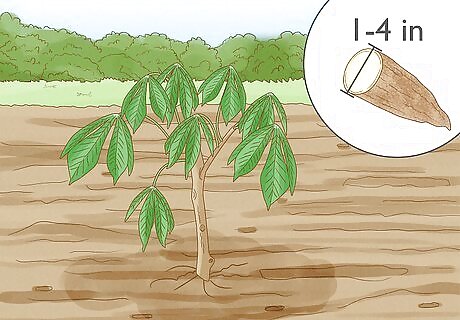
Cassava is a shrubby plant known for its edible root vegetable. Its roots have a nutty flavor and a white, starchy texture that’s slightly firmer than a potato. The roots are wrapped in thick, fibrous outer bark. That plant itself grows 6-8 feet (1.8 - 2.5 meters) tall and has long, yellow-green leaves with reddish stems. Cassava roots can reach 1-4 inches (2.5-10 cm) in diameter and 8-15 inches (20-38 cm) long. Cassava is often farmed and harvested as a food crop. The roots take 8-11 months to mature.
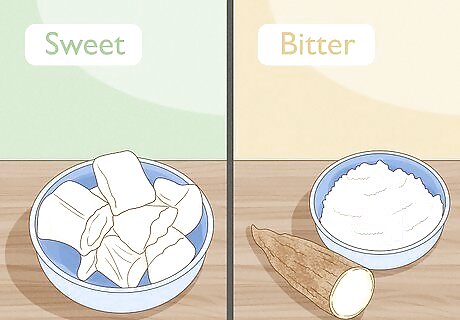
There are two types of cassava: sweet and bitter. Sweet cassava is peeled, cooked, and eaten as a vegetable. Bitter cassava is usually grounded into powder and heated to produce cassava flour, a.k.a. tapioca flour. Both types of cassava contain toxins, which are eliminated by cooking.
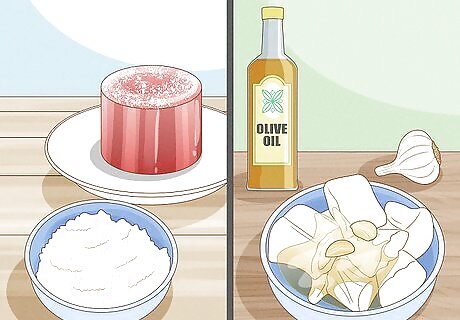
Cassava is cooked and prepared in lots of different ways. Bitter cassava is ground into cassava starch, a.k.a. tapioca flour, and used to make cakes, pudding, and even tapioca pearls for bubble tea. Sweet cassava can be mixed with milk and creamed into a paste similar to mashed potatoes. It can also be chopped and baked to make yuca fries—the cassava equivalent of french fries—or boiled and served with garlic and olive oil. There are countless recipes for cooking cassava, and many different foods that include cassava as an ingredient. Cassava is found in chips, cookies, breads, brownies, and tortillas, to name just a few possibilities.
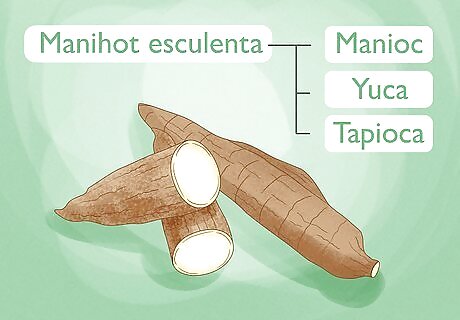
Cassava is known by several different names. Its scientific name is Manihot esculenta, though it’s also known as manioc, yuca, and tapioca (in ground form). The word cassava comes from casavi, the name given to the plant by the indigenous Taíno people who first exposed cassava to European colonizers. Cassava is also ground into starch to produce tapioca flour. The word “tapioca” comes from typióca, the name given to the crop by the Tupi people of South America.
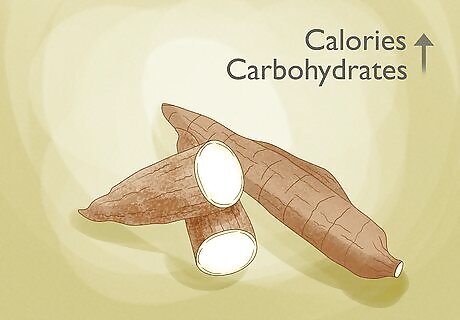
Cassava is extremely rich in calories and carbohydrates. This makes it a very efficient crop for feeding large numbers of people, since a small number of crops produces a lot of calorie-rich food. However, cassava is also very low in fat, protein, and micronutrients like minerals and vitamins. Populations that depend on cassava for carbohydrates must get other nutrients from different sources. Cassava is the second-most carbohydrate-rich crop in the world, second only to sugarcane.
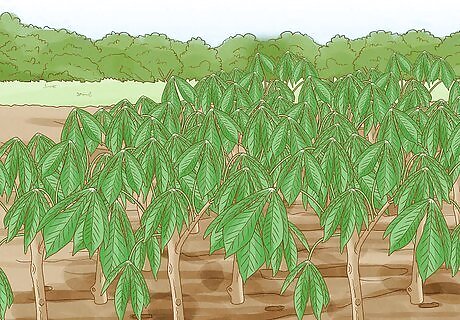
Cassava is an important crop in many parts of the world. It has a high yield, meaning that many cassava plants can grow on a small area of land. It also grows very well in poor soil and is resistant to drought and insect damage. These traits make cassava an excellent tool for preventing famine. Due to its poor protein and fat content, eating cassava alone can lead to malnutrition. Populations that rely on cassava must get these other nutrients from different sources.
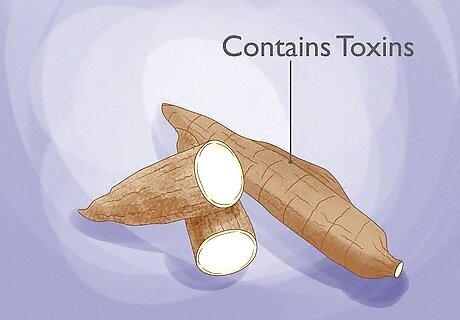
Cassava contains toxins that are eliminated by cooking. If eaten uncooked, both sweet and bitter cassava contain compounds that release cyanide into the body. Cooking removes most or all of these toxins, so there’s no need to worry. But unlike many vegetables, cassava cannot be safely eaten raw. Cassava is not the only vegetable that contains toxins. Raw yams and sweet potatoes are also toxic, but as with cassava, cooking them makes them safe to eat.
Yucca
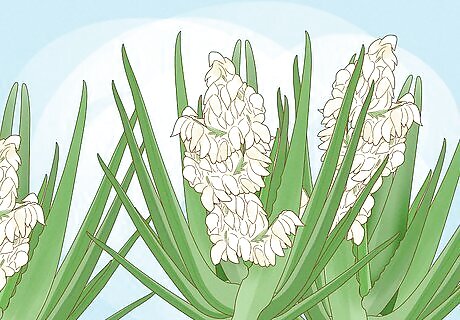
Yucca is a shrub known for its white flowers and blade-like leaves. Its flowers are bell-shaped and grow in bunches, while its leaves grow up and outward, giving the plants a distinctive look. Yucca plants produce a black, leathery fruit that can be roasted and tastes somewhat like a banana. There are many species of yucca, most of which are found in Latin America and parts of the Southwest United States.

Yucca is mainly used as a decorative plant. It’s often grown in gardens or used for landscaping in Latin America and the Southwest United States. Since it grows well in dry, sandy soil and full sunlight, yucca sometimes grows naturally in deserts as well. While yucca plants are not dangerous for humans, they can cause vomiting in dogs and cats if the leaves are ingested. People who grow yucca in their gardens should keep their pets away from the plants as much as possible.
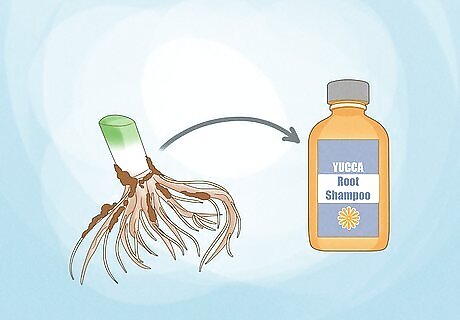
Ancient peoples sometimes used yucca roots to make shampoo. The roots are high in saponin, a substance that creates a soapy lather that’s used in cleaning. To make shampoo, the roots were bounded and mixed with colts water to create suds. Some modern brands make yucca-based shampoo.















Comments
0 comment